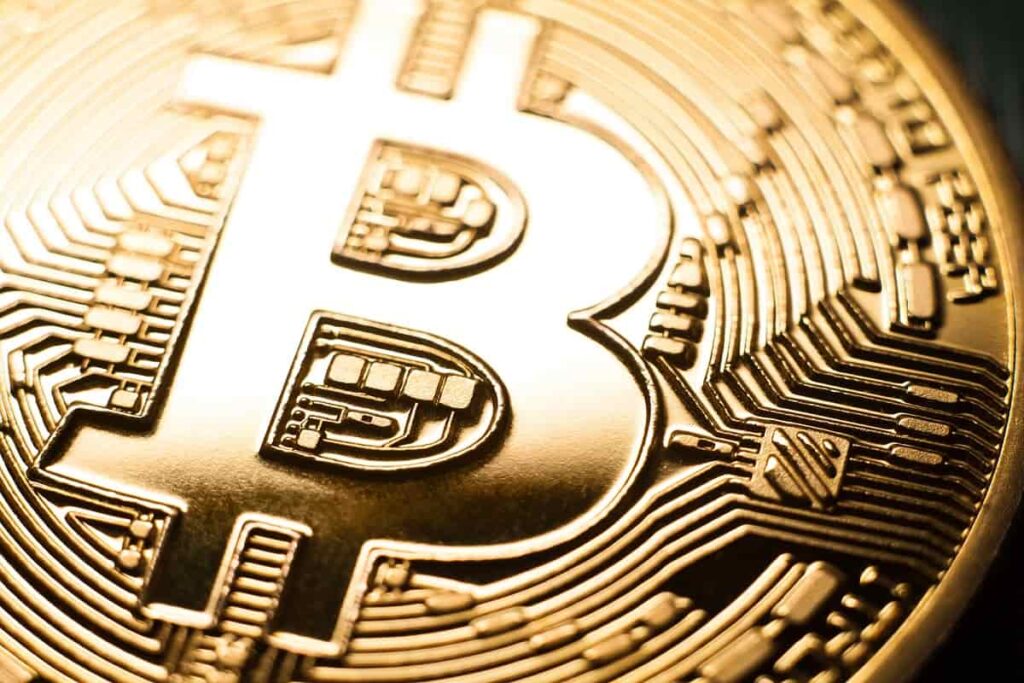Bitcoin is Crashing and Burning: What Next?
Table of contents

Web 3.0 is turning out to be an absolute mess. Someone named otterooo (that’s all anyone knows about him) is on Twitter accusing a cryptocurrency exchange that operates in over 200 countries, KuCoin, of being insolvent. In response, the CEO is posting on the company blog his conversations with otterooo (translated from Mandarin) along with screenshots of otterooo offering to sell his Twitter account for $50K “because all the gigachads follow him.”

It’s almost like a bunch of high school kids decided to go play capitalism and their classmates invested their parent’s life savings in all the “business models” that were concocted over a bowl of chronic. Whenever a CEO uses the acronym FUD (fear, uncertainty, doubt), he’s not a leader, he’s just a one-eyed man leading the blind through his rendition of the Web 3.0 cult which – just like in high school – has its own lingo you need to use to show affiliation. Ngmi.
The Crypto Crash of 2022
Even TechCrunch warns us to Get Ready For a Lot of Dead DAOs. Ah yes, the decentralized autonomous organization (DAO), an idea straight out of a Karl Marx manifesto. Opensource has been operating as a DAO for decades, and some of the most impressive software platforms out there have been developed by opensource communities. Web 3.0 DAOs ended up being collections of people who spend half their time “influencing” and the other half of their time being interviewed by “influencers.”
The hits are coming hard and fast. Remember when we warned about one of the world’s most popular stablecoins, Tether? While we’ve been waiting for Tether’s house of cards to come crumbling down, another stablecoin imploded. TerraUSD, a $16 billion stablecoin supposedly built to maintain parity with the U.S. dollar along with Luna, a $40 billion crypto asset associated with it, both collapsed. News on TheStreet is that a co-founder might be on the hook for taking an $80 million payday while all the lemmings on Twitter wrote suicide notes because they were stupid enough to put their life savings in an investment product offering 19% interest for no apparent reason.

The world’s largest crypto exchanges with millions of customer accounts have been on the receiving end of insolvency rumors. Crypto billionaire Sam Bankman-Fried has been bailing out some players like BlockFi (had $1.8 billion in loans with no collateral) and Voyager (a bankrupt crypto lender). In a recent Forbes piece, he talks about how some crypto exchanges are secretly insolvent. (If that’s true and they’re opening new client accounts, it’s pretty much the definition of a Ponzi scheme.) Singapore-based Three Arrows Capital, a leveraged crypto trading firm with $200 million of exposure to Luna, revealed that it was nearly insolvent after loaning a bunch of money from the firms that – you guessed it – were just bailed out by Mr. Fried-Bankman. Other crypto firms like CoinFlex and Babel Finance have blocked withdrawals because of a lack of liquidity causing the crypto equivalent of a bank run. One of the largest crypto lenders in the world, Celsius Network, filed for bankruptcy weeks ago when their clients suddenly lost their “diamond hands.”
Before it halted all withdrawals last month, Celsius had accumulated more than $20 billion in assets by giving depositors interest rates as high as 18 percent. This was in response to a panic flight by clients.
Credit: Bitcoinist
The entire incestuous house of cards has been fracturing as it rightly should. Even the flagship embodiment of Web 3.0, bitcoin, hasn’t gone unscathed.
The Fall of Bitcoin
Since the beginning of this year, bitcoin has fallen about 52%. As we warned, bitcoin miners have fared worse in every single case. Here’s the year-to-date return of all five bitcoin mining stocks we’ve covered over the years and warned investors to avoid like the plague (company names link to relevant research).
| Bitcoin Miner | Ticker | YTD Return |
| Marathon Digital | MARA | -62% |
| Riot Blockchain | RIOT | -68% |
| Hut 8 Mining | HUT | -73% |
| Argo Blockchain | ARB.L | -61% |
| Core Scientific | CORZ | -83% |
All these miners, along with all the bitcoin bulls, have firmly believed that bitcoin will always appreciate in value. But because bitcoin has no intrinsic value, the price of bitcoin is merely what someone else is willing to pay for it. When the price of gold falls, gold mines start producing less, projects fall through, and the price of gold stocks plummet because they’re usually leveraged plays on the underlying commodity. Bitcoin is no different.
How Low Can Bitcoin Go?
Because bitcoin has no intrinsic value, we’re left with past performance data as an indicator of how low it might go. The herd has a habit of acting in the same manner when faced with fear and uncertainty, so stocks have been shown to demonstrate patterns that behave in (some claim) predictable manners. The study of these patterns is referred to as technical analysis. Here’s a simple example of how this works.
A drawdown refers to the distance between the peak price of an asset and the lowest price of an asset. Over time, bitcoin has seen drawdowns ranging from 83% to 93% as seen below:
- The 2011 period which ended after 160 days and a 93% drawdown
- The 2013-2015 period, which ended after 410 days and an 85% drawdown
- The 2017-2018 period, which ended after 360 days, and an 83% drawdown
Notice how the drawdowns decrease over time which implies that volatility is decreasing. So, if we take bitcoin’s all-time high of $69,000 and extrapolate out some drawdowns, here’s what we get:
- 93% drawdown = $4,830
- 85% drawdown = $10,350
- 83% drawdown = $11,730
- 80% drawdown = $13,800
- 75% drawdown = $17,250
- 65% drawdown = $24,150
Those who put faith in the tea leaves of technical analysis might find some comfort in the above numbers. We shouldn’t see a drawdown that exceeds previous drawdowns, so perhaps we’ve already hit the trough. The maximum drawdown we’ve seen for bitcoin so far has been 74.5%, when the price recently reached $17,567. That could be the extent of this hot crypto summer. However, we are in a bear market, so it’s entirely possible that we see a bigger drawdown than what’s happened so far. This is where we could just tell you to stay “cautiously optimistic” and call it a day, but we’ll do better than that.
Buy Bitcoin or Sell Bitcoin?
There are several reasons we invested in bitcoin. The first was to provide diversification because we believe bitcoin to be an alternative asset that’s not correlated to the broader market. The second was that we found ARK’s bull thesis to be credible and wanted some exposure to that potential. Then, the bear market hit, and everything changed.
Almost exactly at the start of this year, the Nasdaq started hitting the skids. As soon as that happened, bitcoin suddenly became correlated with the stock market hitting an all-time correlation high in April of this year. As bitcoin bottomed out, the correlation fell off the cliff, and everyone breathed a collective sigh of relief. Bitcoin had resumed its role as an alternative asset. Well actually, everyone absolutely panicked, because bitcoin is only supposed to go one way – up – according to all the crypto influencers on Twitter. Point being, if we look at things over the long run, then bitcoin would still be considered negatively correlated against the stock market.
As for ARK’s thesis, there is a certain self-fulfilling prophecy that takes place when an extremely successful thematic asset manager (in the world of finance, success is how much you raise, not how it performs) calls bitcoin the next gold. With net inflows in 2021 and assets under management (AUM) of around $14 billion (down 50% from the peak), ARK may have taken a fall but they’re hardly out of the race. Their thesis hasn’t changed, but the crypto world has. We’re concerned with what we warned about last December right before crypto crashed – the systemic risk presented by the likes of Tether and their ilk.

As crypto entities start to implode and billions of dollars evaporate, there’s every reason to think that there’s more where that came from. When Tether decides to be audited, maybe then we’ll change our tune.
We can’t tell you what to do because everyone has their own unique set of circumstances. Ours is a bitcoin position that presently accounts for around 1% of our total assets under management at a cost basis of $7,815 per coin. To reduce risk, we recouped our entire investment with a +7% return at an average selling price of $41,907. We’re now playing with the house’s money, but wary of falling prey to the house money effect. Our perception of ARK’s thesis hasn’t changed, but systemic risk in the cryptocurrency world has increased sharply. Be greedy when others are fearful doesn’t apply to assets with no intrinsic value. If the price of bitcoin draws down below 83%, volatility is not decreasing as pundits like ARK have promised, and that’s when you ought to start having some FUD.
In the past, we haven’t been providing details as to when we buy or sell art, wine, or bitcoin. Going forward, we’ll send an alert to Nanalyze Premium annual subscribers if we decide to buy or sell bitcoin based on what we’ve discussed today.
Conclusion
We’ve strongly condemned the entire Web 3.0/crypto/ICO thesis since its inception because it was an unregulated volatile mess rife with more scams than the over-the-counter market. Every time you turn around, some crypto exchange reports hundreds of millions disappearing into thin air while everyone says “oh well” and moves on to the next scheme. There’s value to be had in some of these ideas, and blockchain has seen some momentum with use cases such as supply chains and realty. When it comes to the two primary cryptocurrencies out there – Bitcoin and Ethereum – stay cautiously optimistic and you’ll be just fine. Wagmi.









I think Ethereum is a much more interesting bet right now, because of incoming change to Proof-of-Stake (PoS).
The change will bring changes that will, according to Ethereum, make the currency “more scalable, more secure, and more sustainable”.
The next step in the Ethereum upgrade is the Ethereum merge date. Based on the latest scheduling, the Ethereum merge will happen on September 19, 2022.
So it is less than 2 months from now.
That date has slipped quite a bit in the past so hopefully that’s set in stone now. For the rest of the class, here’s a piece we did on that topic: http://nanalyze.donebox.hu/2022/01/buying-ether-ethereum/